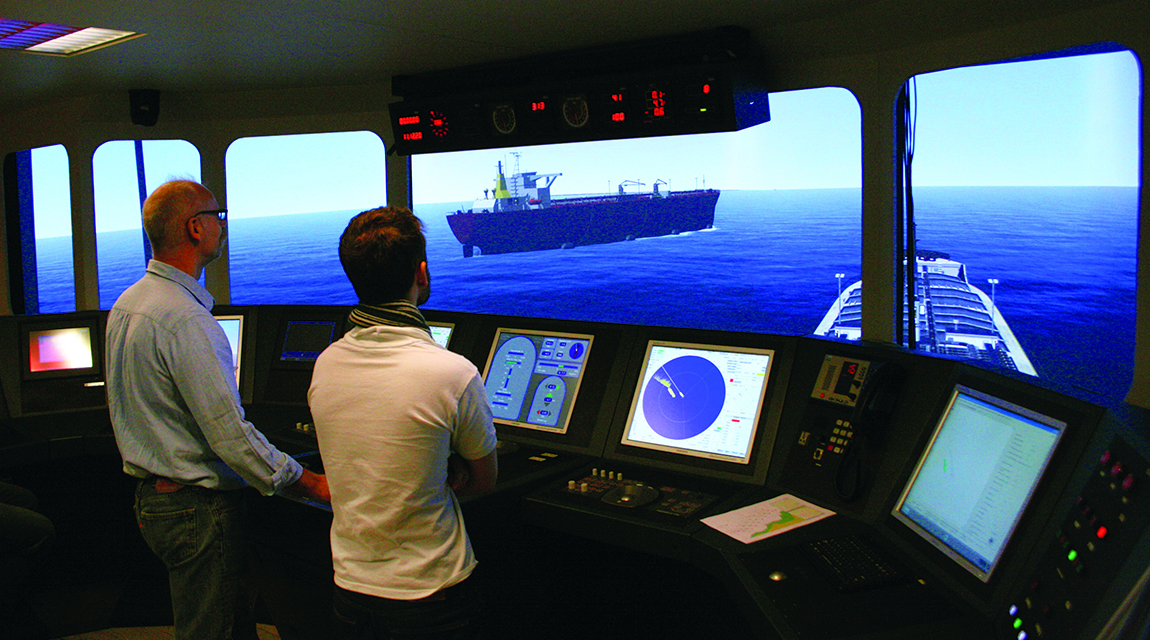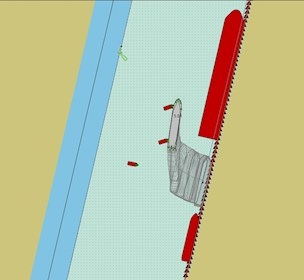Safe passing distances to moored ships
A critical factor in designing or operating a port is when entering or departing ships are required to pass already moored ships.
When a ship passes another ship moored at a berth, interaction forces between the ships will occur. Depending on the sizes of the ships and the speed of the passing ship, the interaction forces cause the moored ship to move. These motions in combination with environmental forces can be so large that the mooring lines in worst case break and the vessel may cause damage to other ships and to the berth.
The berthed ship’s motions caused by the passing ship and/or environmental forces can also restrict loading/unloading operations, e.g. crane operations or operations with marine loading arms.
Thus, it is important to investigate these phenomena in order to predict the effects of a passing ship and the environmental forces on the motions and mooring loads of the berthed ship.
Other factors such as tug operations may also impact a moored ship and contribute to an unsafe situation.
Assessment of moorings and motions
The above-mentioned challenges can be addressed in a simulation study by use of a ship simulator. By evaluating the proposed mooring configuration on a specific quay, it is possible to assist the decision makers in validating and determining the optimal solutions with respect to bollards, fenders and mooring lines as well as the motion of the moored ship in six degrees of freedom (6DOF).
A simulation study will also provide operational guidelines in the form of minimum passing distance to moored ships as well as define speed restrictions in the port.
The ship simulator can make fast-time simulations where a specific scenario is repeated several times under changing conditions, thereby providing results based on only a few hours of testing.
From the simulations, it is possible to determine if the motions of the moored ship are within the guidelines for safe operation, e.g. crane operation limitations where the tolerances are small for safe operation. Besides the motions, the simulations will reveal if the suggested mooring configuration is sufficient for securing the ship under the given environmental forces or the forces from passing ships.
Besides the simulations and calculations done in the simulator, it is our experience that the best solution derives from having captains evaluating the scenario in order to incorporate the expertise with real life mooring configurations.
“The evaluation gives the port an opportunity to develop requirements for the ship owners for safe mooring configuration with respect to environmental forces as well as forces from passing ships, which can then be used for the port to set up regulations,” says Senior Project Manager Niels Arndal.
The value of accuracy, experience and competences
To reach to the correct conclusions and recommendations, it is important to provide the parties involved in the study with a sound foundation for decision-making:
- Well-proven methods used for planning and executing simulator studies
- Senior engineers, instructors and captains with professional experience relevant for the study
- Data modelling including accurate advanced mathematical models
- Data modelling of realistic area databases including accurate time-varying current, tide, wind, and waves
- Data modelling of realistic mooring arrangement, hawser characteristics, and fenders
- Advanced simulation facilities, including our in-house developed software package.
Another valued element is the flexibility of a simulation study. Based on the findings that emerge during a simulation, we can rapidly change the scenario (e.g. change mooring configuration or change speed, distance etc.) during the simulation study which means that it often saves valuable time for the customer.



